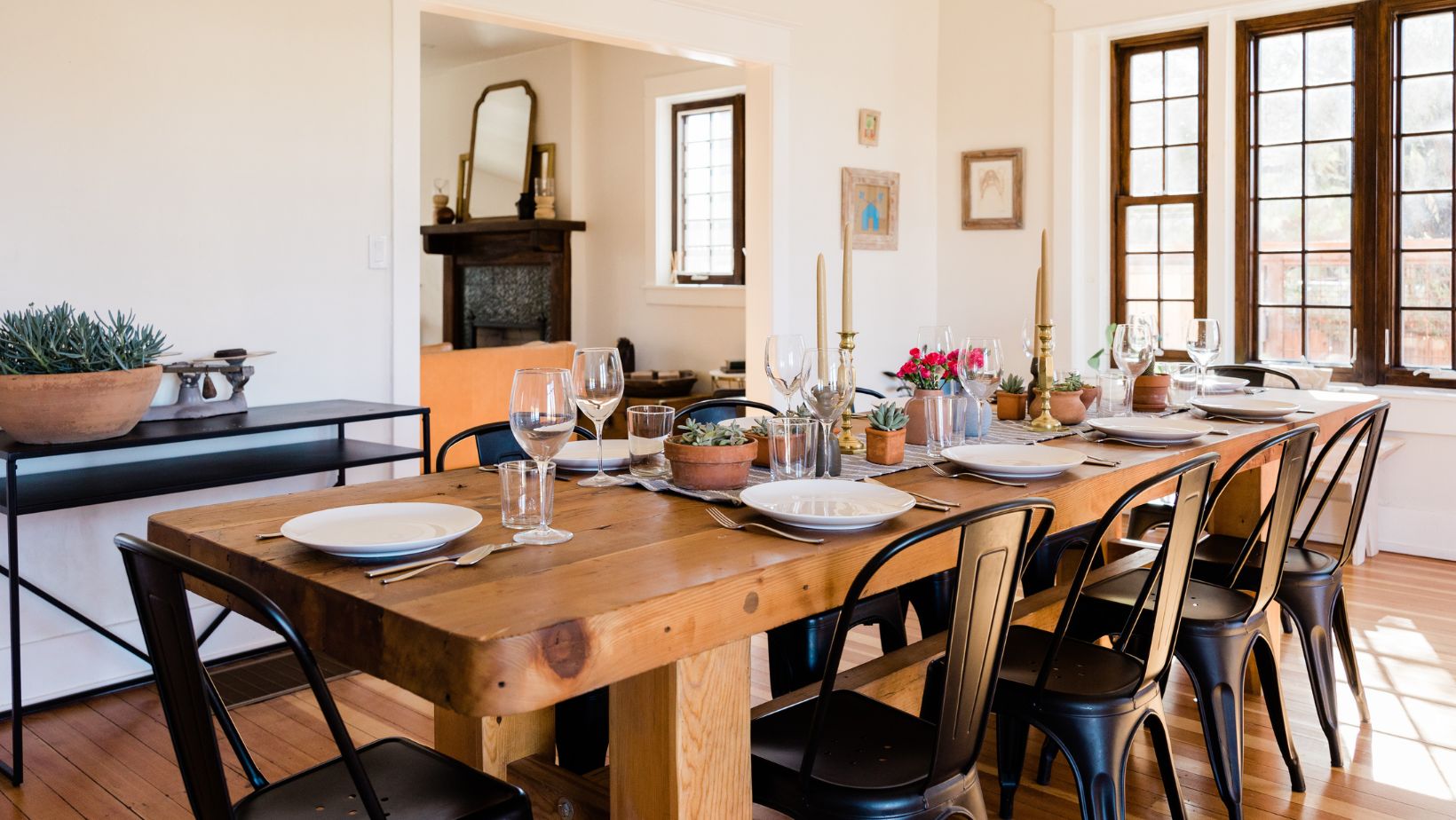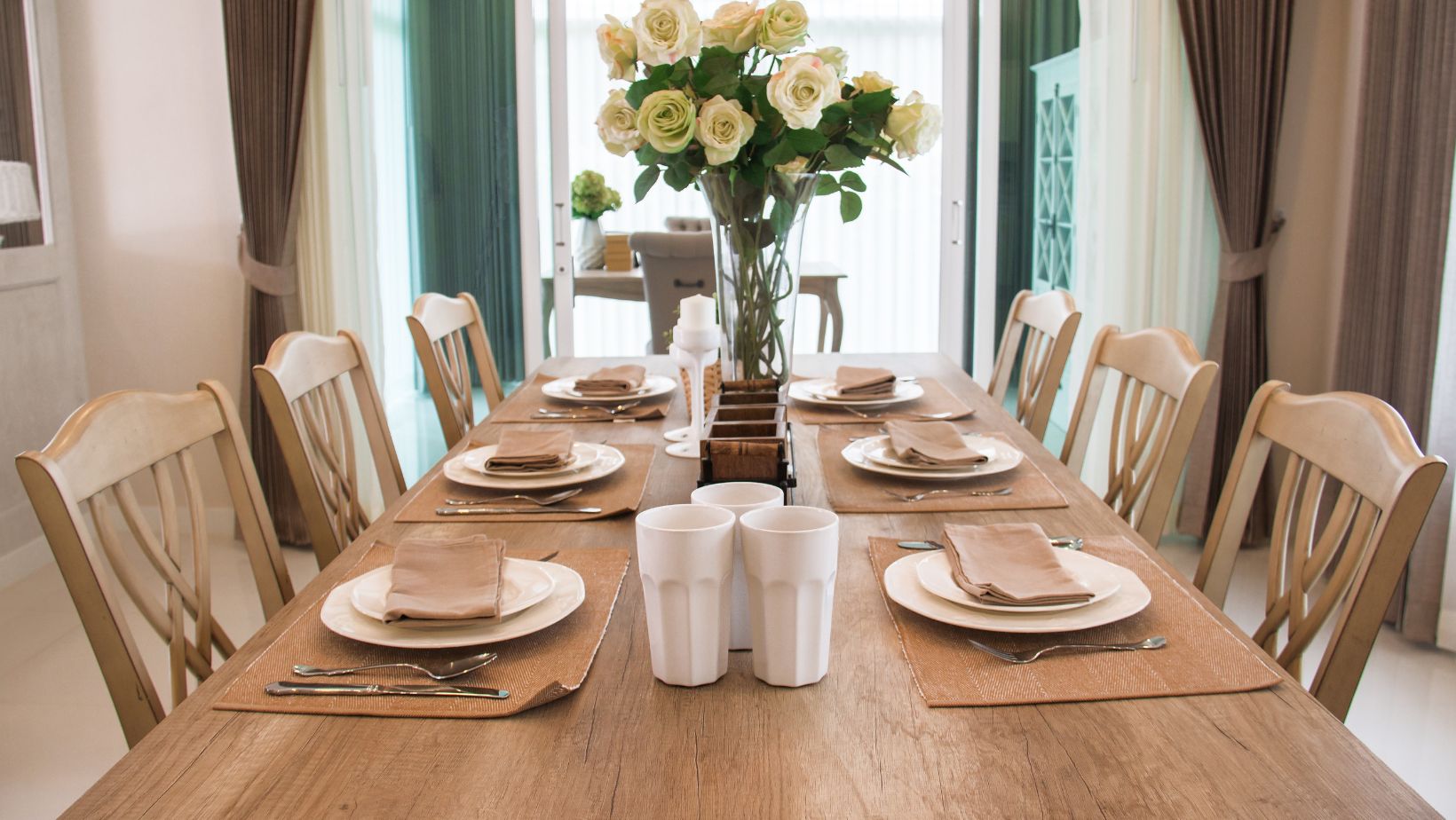
The extendable dining table emerges as a harmonious melody in the symphony of modern living, where space is both a canvas and a constraint. Beyond its functional allure lies a transformative design, a piece of furniture that gracefully adapts to the ebb and flow of daily life. This exploration ventures into extendable dining tables, celebrating their versatility, innovative mechanisms, and the captivating interplay of aesthetics and practicality. Join us on a journey where form meets function and where the heart of the home becomes a stage for adaptability and style.
The Evolution of Dining Spaces
Gone are the days when dining rooms were reserved for formal occasions. Modern living embraces open floor plans and multifunctional spaces, turning the dining area into a central hub for daily activities, from family dinners to remote workstations. This shift in lifestyle has fueled the demand for furniture that not only complements aesthetic preferences but also optimizes available space.
The Appeal of Extendable Dining Tables
Extendable dining tables have captured the hearts of homeowners and interior enthusiasts alike, and their appeal lies in a combination of practicality, versatility, and aesthetic charm. Let’s delve into the enchanting world of extendable dining tables to understand why they have become a focal point in modern living spaces.
- Space Optimization: One of the primary draws of extendable dining tables is their remarkable ability to optimize space. These tables offer a dual-purpose solution in today’s compact living environments, where every square foot counts. When not used for larger gatherings, they seamlessly transform into more modest-sized tables, allowing for an intimate dining experience without sacrificing valuable space.
- Adaptability to Guest Numbers: Hosting guests can be a common occurrence, and the adaptability of extendable dining tables to varying guest numbers is a game-changer. Whether it’s a casual meal for the family or a grand celebration with friends, these tables effortlessly accommodate different group sizes. This adaptability is particularly valuable in modern living, where the dining area is a multifunctional space for various activities.
- Versatility in Design: Extendable dining tables come in a diverse range of designs, materials, and styles, catering to a broad spectrum of interior preferences. Whether your aesthetic leans towards contemporary chic, rustic charm, or timeless elegance, there’s an extendable table to complement and enhance your existing decor. The versatility in design ensures that these tables aren’t just functional; they are also a statement piece in the room.
- Functional Aesthetics: The appeal of extendable dining tables extends beyond their practical use. Many of these tables are crafted with a keen eye for design aesthetics. The mechanisms for extension, whether they involve folding leaves, sliding panels, or other innovative designs, are seamlessly integrated into the table’s overall look. This fusion of form and function results in a piece of furniture that is not only utilitarian but also visually pleasing.
- Transformer Tables: A Revolution in Adaptability: Transformer tables, exemplified by the solid wood extendable dining table, represent a revolutionary approach to adaptability. The inclusion of bench seating maximizes space and introduces a communal and contemporary element to the dining experience. Transformer tables often go beyond mere functionality; they are a testament to craftsmanship and innovative design thinking.
- Social and Communal Aspect: Dining is a social activity; extendable tables acknowledge and enhance this communal aspect. The ability to extend the table encourages longer conversations and shared moments during meals. The inclusive design of many extendable tables, especially those with bench seating, fosters a sense of togetherness and connection among those seated around it.
- Sustainability and Longevity: Many extendable dining tables are crafted from high-quality and sustainable materials, contributing to their appeal to eco-conscious consumers. Their adaptability also enhances the longevity of these tables. Instead of replacing a table as lifestyle or family size changes, an extendable table can evolve with the homeowner, providing lasting value.
Key Features of Extendable Dining Tables
Extendable dining tables boast key features contributing to their popularity and practicality in modern living spaces. These features are carefully designed to enhance the functionality, adaptability, and aesthetic appeal of these versatile pieces of furniture. Let’s explore the key features that make extendable dining tables stand out:
- Butterfly Leaf Mechanism: Some extendable tables feature a butterfly leaf mechanism, where a self-storing leaf folds and tucks beneath the table when not in use. This design provides a clean and uncluttered look.
- Drop-Leaf Design: The drop-leaf design involves hinged leaves that can be raised or lowered as needed. This classic mechanism allows the table to be compact and expanded for larger gatherings when not in use.
- Sliding Extension: Tables with a sliding extension system often have hidden panels that can be easily maneuvered into place. This design offers a seamless transition between the compact and extended forms.
- Transformer Tables: The innovative concept of transformer tables takes adaptability to the next level. These tables often have bench seating and combine folding and sliding mechanisms for a truly transformative experience.
Practical Considerations for Choosing an Extendable Dining Table
Choosing the perfect extendable dining table involves carefully considering various practical factors to ensure it seamlessly aligns with your lifestyle, space constraints, and aesthetic preferences. Here are practical considerations to guide you through the selection process:
- Available Space: Measure the open space in your dining area to determine the size and shape of the extendable dining table that best fits. Consider the dimensions both in its compact and extended forms.
- Material and Finish: The material of the table contributes to its aesthetic appeal and durability. Solid wood, glass, and metal are popular choices. Consider the finish that complements your overall interior design.
- Ease of Extension: Evaluate the ease of extending and retracting the table. Smooth and user-friendly extension mechanisms enhance the overall usability of the table.
- Seating Options: Some extendable dining tables have matching benches or additional chairs. Consider the seating options provided and their compatibility with your preferences.
Maintenance and Care
Proper maintenance is essential to ensure the longevity and beauty of an extendable dining table. Here are some general tips:
- Cleaning: Regularly clean the table with a soft, damp cloth to remove dust and spills. Use a mild, non-abrasive cleaner suitable for the table’s material.
- Avoiding Direct Heat and Sunlight: Place the table away from direct heat sources and prolonged exposure to sunlight, which can cause fading and damage.
- Using Placemats and Coasters: Protect the table surface by using placemats and coasters. This prevents scratches, stains, and heat damage from hot dishes.
- Checking and Tightening Mechanisms: Periodically check and tighten the extension mechanisms to ensure smooth operation and stability.
Conclusion: A Transformative Dining Experience
In the ever-evolving interior design landscape, extendable dining tables have emerged as functional art, offering a perfect blend of adaptability and aesthetics. Whether hosting a cozy dinner for two or a festive gathering, the ability to transform the dining space to suit the occasion adds a layer of sophistication to modern living. As we continue to celebrate the fusion of form and functionality, extendable dining tables stand as versatile companions, inviting us to reimagine the possibilities of communal spaces within our homes.







